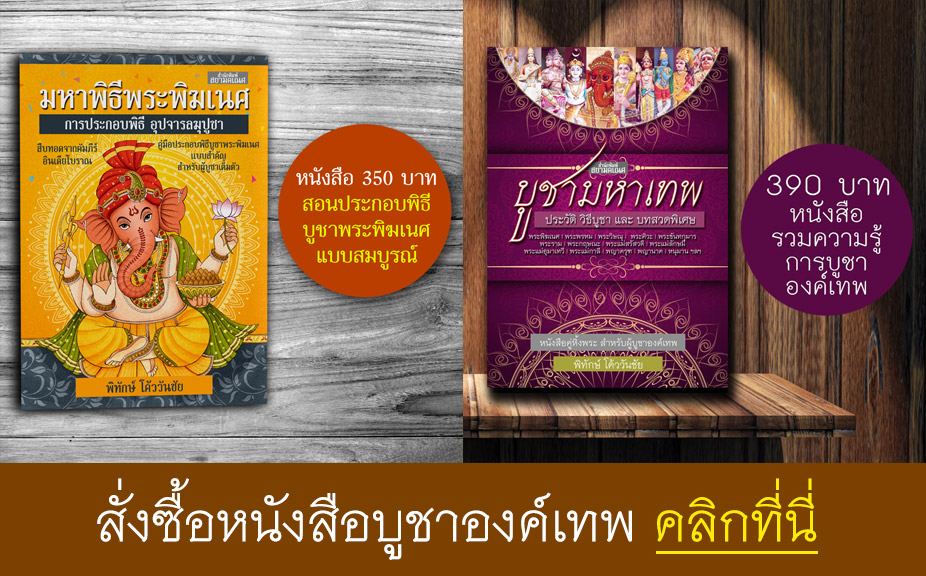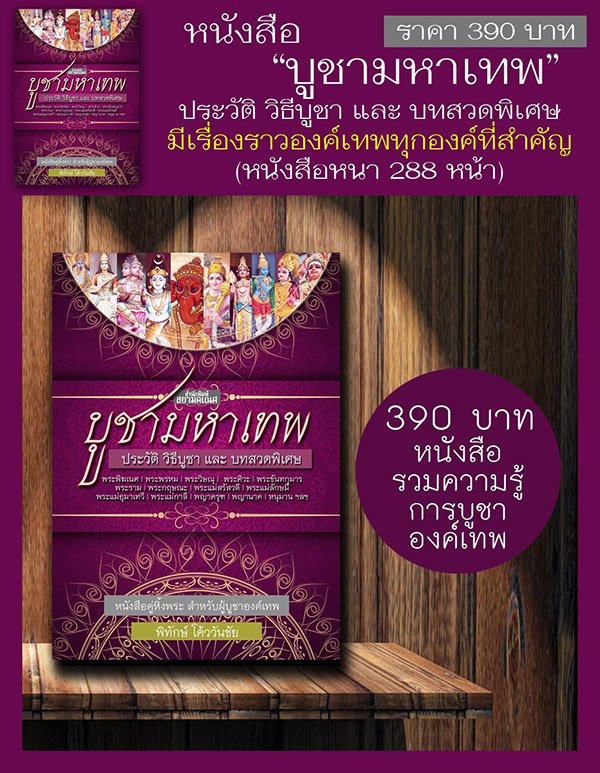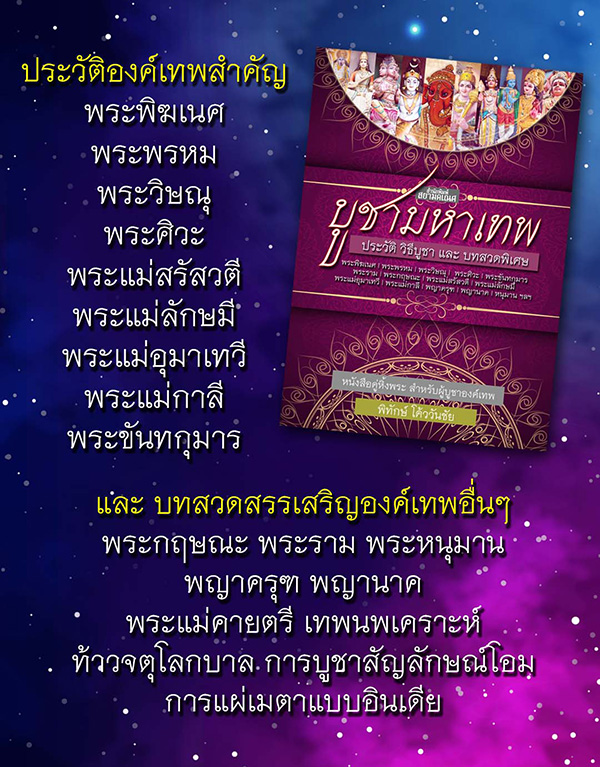The Ecumenical Vision of Buddhadasa Bhikkhu and
His Dialogue with Christianity
ทัศนะของพุทธทาสภิกขุเกี่ยวกับศาสนาๆ
และการสนทนาวิสาสะของท่านกับชาวคริสต์
Delivered on 2 May 2004 by Prof. Swearer
… สมหมาย เปรมจิตต์ แปล
To study different religions comparatively with an attitude of good will results in mutual understanding. This, in turn, brings about a way of thinking and acting in men which causes them not to hurt each other’s feelings. And not to hurt one another’s feelings further gives rise to peaceful co-existence par excellence between all societies and nations of the world.
Christianity and Buddhism are both universal religions; they exist wherever truly religious people practice their religion in the most perfect way. If religious persons show respect for each religion’s founder and for the Dhamma-truth at the core of each religion, they will understand this interpretation. Devotion to a religion results in the cessation of self-interest and self-importance and therefore leads to a realization of the universality and unity of all religions. (Buddhadasa Bhikkhu, Buddhism and Christianity)
การศึกษาเปรียบเทียบศาสนาต่างๆ ด้วยความหวังดี ย่อมจะก่อให้เกิดความเข้าใจกันดีขึ้น ทั้งจะทำให้เราไม่คิดที่จะทำในสิ่งที่จะก่อให้เกิดความบาดหมางแก่อีกฝ่ายหนึ่ง การไม่ทำร้ายจิตใจผู้อื่นนั้น จะทำให้เราอยู่ร่วมกันได้อย่างสันติ ระหว่างประชาคมโลก
ศาสนาคริสต์กับศาสนาพุทธ เป็นศาสนาใหญ่ของโลก ศาสนาทั้งสองต่างก็มีศาสนิกที่ดี ที่ปฏิบัติตามศาสนาของตน หากศาสนิกของแต่ละศาสนาให้ความเคารพต่อศาสดาของกันละกัน และต่อสัจธรรมอันเป็นแก่นแท้ของแต่ละศาสนา ศาสนิกเหล่านั้นก็จะเข้าใจความหมายที่ข้าพเจ้ากล่าวมานี้ ศรัทธาความเลื่อมใสในศาสนา ทำให้คนเราลดทิฐิมานะ และการสำคัญตัวเองผิด ผลก็คือเราจะได้เห็นความเป็นสากลและเอกภาพของศาสนาทั้งหมด (Buddhadasa Bhikkhu, Buddhism and Christianity)
A Personal Introduction
It is an honor for me to be invited by Acharn Sulak to deliver the 2547 Spirit in Education Movement lecture. We have been friends since 2511 (1968 C.E.). That year I was studying the writings of Buddhasa Bhikkhu and Sulak kindly offered to accompany me to Wat Suan Mokkh to meet Than Acharn. That visit to Suan Mokkh proved to be a memorable event in my life. Even though I was born and raised as a Christian, the Buddhist philosopher, Buddhadasa, became an intellectual guide and spiritual inspiration. That same year Sulak, who was then the editor of Visakha Puja, published the first of several essays I have written about Buddhadasa Bhikkhu over the forty years of my professional career as a teacher of comparative religions. It seems fitting that as I approach retirement from Swarthmore College thirty-six years after meeting Ven. Buddhadasa, I am once again able to reflect on the subject I addressed at that time, namely, Buddhadasa’s dialogue with Christianity.
คำนำส่วนตัวขององค์ปาฐก
ข้าพเจ้ารู้สึกเป็นเกียรติอย่างสูงที่ได้รับเชิญจากอาจารย์สุลักษณ์ ศิวรักษ์ ให้มาแสดงปาฐกถาชุด “2547 Spirit in Education Movement” อาจารย์สุลักษณ์กับข้าพเจ้าเป็นเพื่อนสนิทกันมาตั้งแต่ปี 2511 เมื่อครั้งข้าพเจ้ากำลังศึกษาผลงานของท่านพุทธทาส อาจารย์ สุลักษณ์ได้เมตตาเป็นเพื่อนไปวัดสวนโมกข์กับข้าพเจ้าเพื่อพบกับท่านพุทธทาส การไปสวน โมกข์ในครั้งนั้นยังคงเป็นเหตุการณ์ที่ติดตาตรึงใจข้าพเจ้าตลอดมา ถึงแม้ข้าพเจ้าจะเกิดมาเป็นคริสต์ และได้รับการเลี้ยงดูมาแบบคริสต์ แต่ข้าพเจ้าก็ถือว่า ท่านพุทธทาส นักปรัชญาเมธีชาวพุทธ เป็นผู้นำทางปัญญาและเป็นผู้บันดาลใจให้ข้าพเจ้ารู้โลกเราดีขึ้น ในปีเดียวกันนั้นเองอาจารย์สุลักษณ์ ซึ่งขณะนั้นท่านเป็นบรรณาธิการวารสาร “วิสาขบูชา” ได้พิมพ์บทความชิ้นแรกของข้าพเจ้าที่เขียนเกี่ยวกับท่านพุทธทาสในช่วงเวลา 40 ปีที่ข้าพเจ้าเป็นอาจารย์สอนวิชาศาสนาเปรียบเทียบ ดูเหมือนจะเป็นโอกาสเหมาะเมื่อข้าพเจ้าย่างเข้าสู่วัยเกษียณจากวิทยาลัยสวาร์ธมอร์ หลังจากที่ได้พบกับท่านพุทธทาสมานานถึง 36 ปี ข้าพเจ้ามาหวนระลึกถึงสิ่งที่ตัวเองเคยพูดในเวลานั้น คือ “การสนทนาวิสาสะของท่านพุทธทาสกับชาวคริสต์”
I realize that the term, “dialogue” is problematic in some Buddhist circles in Thailand because it is seen as a covert means of conversation. Such an understanding of inter-religious dialogue is extremely unfortunate because true dialogue, in my view and I think Buddhadasa’s as well, is an attempt to come to an in-depth and unbiased understanding of the worldview and the way of life of other. The purpose of dialogue in the sense of open, empathetic is not conversation but mutual understanding and mutual enrichment; it is committed to learning rather than dogmatic assertion. The Sinclair Thompson lectures delivered at the Buddhist Association in Chiang Mai in 2515, and later published as Dialogue: The Key to Understanding Other Religions (1977) were intended to promote such mutual understanding. The lectures reflected my experience that dialogue has given me a richer understanding of Buddhism and of Christianity–what Buudhadasa would see as the Dhammic nature of the world’s religions.
ข้าพเจ้ารู้ว่า คำว่า Dialogue หรือ สนทนาวิสาสะ ยังเป็นศัพท์ที่มีปัญหาในวงการชาวพุทธไทยบางพวก เพราะบางคนเห็นว่ายังมีความหมายแอบแฝงไปในทางชักจูงให้เข้ารีต ความเข้าใจทำนองนั้นถือว่าเป็นเรื่องที่น่าเศร้า เพราะการสนทนาวิสาสะที่แท้จริงในทัศนะของข้าพเจ้าและในทัศนะของท่านพุทธทาส หมายถึงความพยายามที่จะมาเข้าใจโลกทัศน์และวิถีชีวิตของคนอื่นให้ลุ่มลึกโดยปราศจากอคติ จุดประสงค์ของการสนทนาวิสาสะในความหมายนี้ มิใช่เป็นการชักจูงให้เข้ารีต แต่หากเป็นความเข้าใจและเรียนรู้ซึ่งกันและกันมากขึ้น มันเป็นหน้าที่ที่เราจะต้องเรียนรู้กัน ไม่ใช่การอวดอ้างว่าศาสนา ของตนดีที่สุด ปาฐกถาภายใต้โครงการอนุสรณ์ ซินแคล์ ทอมป์สัน ซึ่งข้าพเจ้าได้แสดงที่พุทธสมาคมเชียงใหม่เมื่อปี 2515 และต่อมาได้ถูกนำไปตีพิมพ์เป็น “Dialogue: The Key to Understanding Other Religions (1977)” ก็มุ่งที่จะส่งเสริมความเข้าใจที่ว่านี้ ปาฐกถาเหล่านั้นได้สะท้อนให้เห็นประสบการณ์ของข้าพเจ้าว่า การสนทนาวิสาสะนี้ช่วยให้ข้าพเจ้าเข้าใจศาสนาพุทธและศาสนาคริสต์มากยิ่งขึ้น คือสิ่งที่ท่านพุทธทาสถือว่าเป็นธรรมะที่แท้จริงของศาสนาโลก
My dialogue with Buddhism has included studying Buddhist teaching and practices in Thailand, Sri Lanka, and Japan; being instructed in insight meditation by teacher in each of those countries; inviting Phra Dhammapitaka to teach at Swarthmore College and Harvard University and Acharn Suluk to be a visiting professor at Swarthmore; being on the board of the International Network of Engaged Buddhist; and studying northern Thai Buddhist texts with the help and guidance of valued teachers and friends. I believe that my dialogical approach to Buddhism has deepened my understanding of the spiritual depths of what it means to be truly human and on doing so my Christian faith has been greatly enriched. My Christian colleges in the Society for Buddhist-Christian Studies hold a similar view. Other Christians, however, are greatly troubled by this kind of open, dialogical, just as some Buddhists may view dialogue as covert evangelism.
การสนทนาวิสาสะเกี่ยวกับพระพุทธศาสนาของข้าพเจ้า รวมไปถึงการศึกษาคำสอนในพระพุทธศาสนาและการปฏิบัติตามคำสอนของชาวพุทธใน 3 ประเทศ คือ ไทย ศรีลังกา และญี่ปุ่น อาจารย์ในประเทศเหล่านี้ได้สอนวิปัสสนาแก่ข้าพเจ้า บางครั้งข้าพเจ้าก็นิมนต์ท่านเจ้าคุณพระธรรมปิฎกไปสอนที่วิทยาลัยสวาร์ธมอร์และมหาวิทยาลัยฮาร์วาด และได้เชิญอาจารย์สุลักษณ์ไปสอนที่วิทยาลัยสวาร์ธมอร์ด้วย ทั้งได้แต่งตั้งท่านเป็นกรรมการเครือข่ายงานชาวพุทธระหว่างประเทศ นอกจากนี้ข้าพเจ้ายังได้ศึกษาคัมภีร์พระพุทธศาสนาในภาคเหนือของไทย ด้วยความช่วยเหลือและชี้นำจากอาจารย์และเพื่อนร่วมงาน ข้าพเจ้าเชื่อว่าการที่ข้าพเจ้าได้ศึกษาพระพุทธศาสนาโดยวิธีสนทนาวิสาสะนี้ ทำให้ข้าพเจ้าเข้าใจความลุ่มลึกของความเป็นมนุษย์ที่แท้จริงมากขึ้น และเพราะการศึกษาในแนวนี้ทำให้ข้าพเจ้าเข้าใจศาสนาคริสต์มากขึ้นด้วย สหายชาวคริสต์ของข้าพเจ้าในสมาคมการศึกษาศาสนาคริสต์และศาสนาพุทธก็มีความเห็นเช่นเดียวกัน อย่างไรก็ตาม ชาวคริสต์ท่านอื่น ยังมีความแคลงใจเกี่ยวกับการสนทนาวิสาสะที่ว่านี้ เหมือนกับชาวพุทธบางท่านที่อาจมองว่า การสนทนาวิสาสะ เป็นการประกาศศาสนาอีกรูปแบบหนึ่ง
Buddhadasa’s Relevance
This morning I wish to focus our attention on the broad, inclusive principles on which Buddhadasa as
a Buddhist philosopher grounds his understanding of Buddhism, in particular, and also other religions, especially Christianity. Buddhadasa’s ecumenical vision, as I have chosen to call it, demands our attention today even more powerfully than it did thirty-six years ago when I first met him. We are now reeling from unprecedented threats and challenges, stresses and strains, that include the global menace of weapons of mass destruction and terrorism, seemingly intractable problems of ethnic and religions violence, widespread degradation of the natural environment and biodiversity loss, an ever growing gap between the rich and the poor, and a tidal wave of a moral consumerism that sacrifices the long term common good for the immediate satisfaction of material benefit. Buddhadasa’s views offer a corrective to these forces of greed, divisiveness, and violence that engulf us. His vision of a principle of the dhammically governed society (thammika sangkhom niyom) is based on principles that are distinctively Buddhist but also truly universal. They include the principle of the good of the whole grounded in the knowledge of the dynamic and interdependent nature of things, the restraint of unbridled self-interest coupled with the positive virtue of generosity; justice motivated by a sense of empathetic fairness for all sentient beings; and, loving-kindness and compassion based on the wise insight that religions, like human beings, while different, share much in common.
พุทธทาสภิกขุเป็นตัวอย่างที่เหมาะสม
เช้าวันนี้ ข้าพเจ้าต้องการจะให้ผู้ฟังทุกท่าน เบนความสนใจไปที่หลักธรรมในพระพุทธศาสนา ซึ่งท่านพุทธทาส, ในฐานะที่เป็นนักปรัชญาพุทธรูปหนึ่ง, ใช้เป็นพื้นฐานสำหรับเข้า
ใจพระพุทธศาสนาและศาสนาอื่นๆ โดยเฉพาะอย่างยิ่งศาสนาคริสต์ ทัศนะของท่านพุทธทาสเกี่ยวกับศาสนาต่างๆ โดยเฉพาะศาสนาคริสต์ วันนี้เราจะต้องให้ความสนใจเป็นพิเศษยิ่งกว่าเมื่อ 36 ปีมาแล้วเมื่อข้าพเจ้าได้พบกับท่านครั้งแรก ปัจจุบันนี้ เรากำลังหลีกเว้นจากภัยคุกคามที่ไม่เคยมีมาก่อน รวมทั้งการท้าทาย ความตึงเครียด ภัยพิบัติทั่วโลก จากอาวุธที่มีอำนาจทำลายล้างสูง และลัทธิก่อการร้าย ซึ่งดูเหมือนจะเป็นปัญหาความรุนแรงทางด้านเชื้อชาติและศาสนาที่แก้ได้ยาก เป็นต้นว่า ความเสื่อมโทรมด้านสิ่งแวดล้อม และความสูญเสียความหลากหลายทางชีวภาพที่กระจายไปทั่วโลก ช่องว่างระหว่างคนรวยกับคนจนที่ทวีขึ้นเรื่อยๆ และกระแสลัทธิบริโภคนิยมแบบไม่แยแสต่อศีลธรรม จนลืมคุณงามความดีที่สั่งสมกันมานาน เพราะเห็นแก่ผลประโยชน์ที่เป็นวัตถุ ทัศนะของท่านพุทธทาส เสนอวิธีแก้อำนาจชั่วร้ายเหล่านี้คือ ความโลภ การถือเราถือเขา และการใช้ความรุนแรง ซึ่งกักกันเราไม่ให้ไปถึงเป้า หมายที่แท้จริงของชีวิต ทัศนะของท่านพุทธทาสเกี่ยวกับ “ธรรมิกสังคมนิยม” ตั้งอยู่บนหลักธรรมที่เป็นของพุทธ แต่เป็นสากลด้วย ซึ่งรวมไปถึงหลักความดีทั้งหมดที่อยู่ในความรู้เกี่ยวกับธรรมชาติของสรรพสิ่ง ซึ่งเป็นกำลังพลวัตและถ้อยทีถ้อยอาศัยกัน การกำจัดทิฐิมานะที่ทำให้เกิดการแบ่งแยก กอปรกับคุณธรรมความเอื้อเฟื้อเผื่อแผ่ ความยุติธรรมที่ตั้งอยู่บนพื้นฐาน คือความรู้สึกเห็นใจเพื่อนร่วมโลก และความเมตตาที่เกิดจากความรู้ชัดว่า ศาสนาทั้งหลายแม้จะแตกต่างกัน ก็ยังมีหลายอย่างที่เหมือนกัน ไม่ผิดอะไรกับมนุษย์เรา
Of the many intriguing aspects of Budhadasa’s worldview that deserve careful study, analysis, and critical evaluation–such as dhammic socialism, nature (thammachat), voidness (suññata), and dependent co-arising (paticcasamuppada)–I wish to direct my remarks specifically to his interpretation of religion with particular reference to Christianity. This is fitting topic because today religion is regarded by many people as responsible for the spread of hated and violence rather than providing a solution. Example abound: Protestant-Catholic violence in Ireland; the conflict between Albanian Muslims and Serbian Christians in Kosovo; the animosity between Muslims and Hindus in India; the terrorist acts on the Tokyo subway perpetrated by Om Shinrikyo; the Sinhalese-Buddhist/Tamil-Hindu conflict in Sri Lanka and the list goes on and on. In the face of religious violence, tension, animosity, and conflict–ones that make headlines and those that do not-adherents of one religion or another are prone to respond defensively, assign blame to the other, or depict the other in the most negative and derogatory terms. These defensive responses only serve to exacerbate tensions among religious adherents. Instead of building bridges, walls are erected that prevent mutual understanding and the possibility of using resources that reside in all religious traditions to contribute toward a more peaceful, harmonious, and just world.
ในบรรดาโลกทัศน์ของท่านพุทธทาสมีหลายอย่างที่น่าทึ่ง ซึ่งเราควรศึกษาวิจัยอย่างรอบคอบและมองหาคุณค่าของศาสนาอย่างพินิจ อาทิเช่น ธรรมิกสังคมนิยม ธรรมชาติ สุญญตา เป็นต้น การตีความศาสนาของท่านโดยเฉพาะคริสต์ศาสนานั้น ข้าพเจ้าต้องการจะเน้นเป็นพิเศษ เรื่องนี้จัดเป็นหัวข้อที่เหมาะสมที่สุด เพราะทุกวันนี้คนส่วนมากมองว่าศาสนาทำให้ความเกลียดชังและความรุนแรงกระจายไปทั่วโลก แทนที่ศาสนาจะชี้วิธีแก้ปัญหา จะเห็นได้จากตัวอย่างต่อไปนี้ : ความรุนแรงระหว่างศาสนาคริสต์นิกายโปรเตสแตนต์กับนิกายคาธอลิกในไอร์แลนด์ ความขัดแย้งระหว่างชาวมุสลิมในอัลบาเนียกับชาวคริสต์ที่เซอร์เบียในโคโซโว ความเป็นปฏิปักษ์กันระหว่างชาวมุสลิมกับชาวอินดูในอินเดีย การก่อการร้ายรถใต้ดินที่กรุงโตเกียว โดยสาวกลัทธิโอมชินริเกียว ความขัดแย้งระหว่างชาวพุทธสิงหลกับชาวฮินดูทมิฬในศรีลังกา เป็นต้น เมื่อเผชิญกับความรุนแรง ความตึงเครียด ความเป็นศัตรูกัน และความขัดแย้งทางศาสนาดังกล่าว ศาสนิกแต่ละศาสนามักตอบปกป้องตัวเอง พยายามตำหนิหรือพูดถึงศาสนาอื่นในแง่ลบ การตอบเชิงปกป้องตัวเองนี้ รังแต่จะช่วยทวีความตรึงเครียดให้รุนแรงยิ่งขึ้นระหว่างศาสนิกต่างศาสนา แทนที่จะสร้างสะพานเชื่อมสามัคคี กลับไปสร้างกำแพงกั้นความเข้าใจกันกับความเป็นไปได้ที่จะใช้ทรัพยากรที่มีอยู่ในศาสนาไปสร้างโลกใหม่ที่มีแต่สันติสุข ความสามัคคี และความยุติธรรม
I have chosen to speak about Buddhadasa Bhikkhu’s ecumenical vision because of its universality and inclusiveness. His is a bridge-building understanding of religion that encourages every religious person to be faithful to his or other her own tradition while at the same time respecting the truth and value of the other. Buddhadasa’s interpretation of Buddhism and Christianity has been controversial. Some Thai Buddhism see his universalism as undermining their tradition, while some Christians charge that he distorts the true meaning of the Bible. The thought-provoking nature of Buddhadasa’s point of view is suggested by the titles of his talks—“No Religion” [Mai Mi Sasana], “A Good Buddhist Should be a Good Christian” [Chaw Phut Thi Di Yom Pen Khrit Thi Di–] to name only two. Buddhadasa’s purpose was to encourage both Buddhist and Christians to recover the deepest principles of their religions, to delve beyond the other, superficial coverings that hide the true core, and in doing so to discover a common ground. For Buddhadasa this enterprise was nothing less than discovering the truth about the nature of things (saccadhamma).
ข้าพเจ้าเลือกพูดเฉพาะทัศนะของท่านพุทธทาสที่เกี่ยวกับศาสนาต่างๆ เพราะทัศนะของท่านมีความเป็นสากลและครอบคลุมสัจธรรมทุกอย่าง ท่านเป็นผู้สร้างสะพานเชื่อมความเข้าใจทางศาสนา ที่จะกระตุ้นให้ศาสนิกทุกคนมีความจงรักภักดีต่อศาสนาของตน ในขณะเดียวกันก็เคารพสัจธรรมและคุณค่าของศาสนาอื่น การตีความศาสนาพุทธและคริสต์ของท่านพุทธทาสกลายเป็นประเด็นปัญหาที่ยังขัดแย้งกันอยู่ ชาวพุทธไทยบางคนเห็นว่า คำสอนเรื่องหลักสากล หรือ Universalism ของท่าน เป็นการบั่นทอนศาสนาของตน ส่วนชาวคริสต์บางคนก็หาว่าท่านบิดเบือนความหมายที่แท้จริงในพระคัมภีร์ ท่านพุทธทาสต้องการปลุกเราให้ตื่น ด้วยมุมมองที่ท่านแสดงในปาฐกถาภายใต้หัวข้อว่า “ไม่มีศาสนา” ชาวพุทธที่ดีย่อมเป็นคริสต์ที่ดี ข้าพเจ้าจะขอเอ่ยถึงเพียง 2 ตัวอย่างคือ ท่านพุทธทาสต้องการกระตุ้นทั้งชาวพุทธและชาวคริสต์ให้กอบกู้หลักธรรมที่ลุ่มลึกในศาสนาของตนคืนมา และให้เจาะลึกทะลุเปลือกนอกที่ห่อหุ้มแก่นแท้ของศาสนาไว้ การกระทำเช่นนี้จะช่วยให้เราค้นพบแก่นแท้ชนิดเดียวกัน ในความเห็นของท่านพุทธทาสการกระทำเช่นนี้มิใช่อะไรอื่นนอกจากการค้นพบสิ่งที่เป็นสัจธรรม
I base my remarks this morning primarily on four of Buddhadasa’s writing: Mai Mi Sasana [No Religion] (2510 B.E./1967 C.E.), Khritasasana lae Phutasasana [Christianity and Buddhism] (2510 B.E./1967 C.E.), Phasa Khon, Phasa Tham [Everyday Language and Dhamma Language] (25…), and Chaw Phut Thi Di Yom Pen Khrit Thi Di [A Good Buddhist should be a Good Christian] (2522 B.E./1979). In these essays Buddhadasa develops his position around three fundamental principles: the distinction between ordinary language and truth language (phasa khorn phasa tham), the concept of non-attachment (chit wang), and the core unity of religions. These themes are woven throughout these writings and my remarks today.
ข้าพเจ้าจะขอพูดถึงงานเขียนของท่านพุทธทาส 4 เรื่อง คือ “ไม่มีศาสนา” (พ.ศ. 2510) “คริสต์กับพุทธ” (พ.ศ. 2510) “ภาษาคนภาษาธรรม” (พ.ศ. 25….) และ “ชาวพุทธที่ดีย่อมเป็นคริสต์ที่ดี” (พ.ศ. 2522) ในบรรดางานเขียนทั้ง 4 เรื่องนี้ ท่านพุทธทาสได้พัฒนาจุดยืนของท่าน โดยอิงหลักธรรมที่สำคัญ 3 ประการ คือ ความแตกต่างระหว่างภาษาคนกับภาษาธรรม แนวคิดเรื่องจิตว่าง และแก่นแท้ของศาสนาทั้งหลายที่เหมือนกัน ความหมายเหล่านี้จะเกี่ยวโยงกันไปตลอดงานเขียนที่ข้าพเจ้ากล่าวมา รวมทั้งการบรรยายของข้าพเจ้าในวันนี้ด้วย
No Religion!
The ordinary, ignorant worldling is under the impression that there are many religions and that they are all different to the extent of being hostile and opposed. Thus one considers Christianity, Islam, and Buddhism as incompatible and even bitter enemies. Such is the conception of the worldly person who speaks according to ordinary impressions. Precisely because of such characterization these exist different religions hostile to one another. If, however, people penetrate to the fundamental nature (dhamma) of religion, they will regard all religions as essentially similar. Although they may say there is Buddhism, Christianity, Islam, and so on, they will also say that essentially they are the same. If they should go on a deeper understanding of the dhamma until finally they realize the absolute truth, they will discover that there is no such thing called religion-that there is no Buddhism, Christianity, or Islam. Therefore, how can they be the same or conflicting
ไม่มีศาสนา!
มนุษย์ปุถุชนที่ยังมีอวิชชาห่อหุ้มอยู่ ย่อมจะเห็นว่า มีศาสนาอยู่มากมาย และศาสนาเหล่านั้น ล้วนแต่มีความแตกต่างกัน จนกลายเป็นศัตรูกัน ดังนั้น บางคนจึงเห็นว่า ศาสนาคริสต์ อิสลาม และพุทธเข้ากันไม่ได้ แถมยังเป็นศัตรูที่แสนจะขมขื่นของกันและกัน ความเห็นเช่นนั้นเป็นแนวคิดของปุถุชนที่พูดไปตามความรู้สึกธรรมดาของตน ว่าโดยข้อเท็จจริงแล้ว เพราะการแยกแยะผิดๆ เช่นนั้น จึงเกิดมีศาสนาที่แตกต่างกัน และเป็นศัตรูกัน อย่างไรก็ตาม ถ้าคนเรายอมเข้าใจธรรมะในศาสนา เขาจะถือว่า โดยแก่นแท้แล้วศาสนาต่างๆ เหมือนกันทุกศาสนา ถึงแม้จะพูดว่ามีศาสนาพุทธ ศาสนาคริสต์ ศาสนาอิสลาม เป็นต้น แต่พวกเขาจะพูดว่าโดยแก่นแท้แล้ว ทุกศาสนาเหมือนกันหมด ถ้าพวกเขาศึกษาต่อไปจนเข้าใจธรรมะลึกซึ้ง จนรู้แจ้งถึงความจริงขั้นสูงสุด ก็จะค้นพบว่า ไม่มีสิ่งที่จะเรียกว่าศาสนา คือ ไม่มีพุทธ คริสต์ หรืออิสลามอีกต่อไป เมื่อเป็นเช่นนี้ ศาสนาเหล่านั้นจะเหมือนกันหรือขัดแย้งกันได้อย่างไร
Buddhadasa’s startling claim, “that there is no such thing as religion,” can be analyzed into four distinct but related dimensions: pedagogical, ethical, epistemological, and ontological. First pedagogical. By the words, “mai mi sasana,” Buddhadasa intends to capture our attention and curiosity. Let’s imagine that we’re at Suan Mokkh half awake in the early morning waiting for Buddhadasa to deliver his dhamma talk. He slowly walks out of his kuti, sits down, and laughing softly blurts out, “There’s no Buddha, no dhamma, no sangha!” Suddenly, we’re fully awake, wondering what he means by such an audacious statement, and all ears to what he will say next. Buddhadasa’s pedagogical style, especially seen in his oral technique, is intended to shatter the doctrinal preconceptions that he believes blind most religious adherents from penetrating to the deepest meaning of their tradition. Equally important, Buddhadasa’s style is a form of sati or focused awareness. This is the praxis dimension of his pedagogical technique that involves that intention of our bodies as well as our minds, our heart (chai) as well as our mind (chai).
คำกล่าวที่น่าตกใจของท่านพุทธทาสที่ว่า “ไม่มีสิ่งที่เรียกว่าศาสนา” สามารถวิเคราะห์ได้ใน 4 มิติที่แตกต่างแต่เกี่ยวข้องกัน คือ ด้านวิธีการสอน ด้านจริยธรรม ด้านทฤษฎีความรู้ และด้านสัจธรรม ประการแรก ด้านวิธีการสอนในคำว่า “ไม่มีศาสนา” นั้น ท่านพุทธทาสมุ่งจะให้เราสนใจและเกิดอยากรู้ ขอให้เราคิดดูก็แล้วกันว่า พวกเราอยู่ที่สวนโมกข์แบบครึ่งหลับครึ่งตื่นตั้งแต่เช้าตรู่ คอยฟังท่านพุทธทาสแสดงธรรม ท่านค่อยๆ เดินออกจากกุฏิ ลงมานั่งบนแท่นแสดงธรรม แล้วพูดโพล่งออกมาพร้อมกับหัวเราะเบาๆ ว่า “ไม่มีพระพุทธเจ้า ไม่มีธรรมะ ไม่มีพระสงฆ์” ทันใดนั้นเอง พวกเราก็ตาลุกทันที คิดว่าท่านหมายถึงอะไรด้วยวาทะที่ก๋ากั่นเช่นนั้น และทุกคนก็ตั้งใจฟังสิ่งที่ท่านจะพูดต่อไป ลีลาการสอนแบบนี้ของท่านพุทธทาส โดยเฉพาะที่พบในการบรรยายธรรมของท่าน มีจุดมุ่งหมายที่จะทำลายการยึดติดคำสอนที่เป็นเปลือกนอก ซึ่งท่านคิดว่ามันปิดกั้นศาสนิกทุกคนมิให้เข้าใจความหมายที่แท้จริงของหลักคำสอน ที่สำคัญอีกประการหนึ่งคือ ลีลาการแสดงธรรมของท่านพุทธทาส เป็นรูปแบบจุดประกายให้เกิดสติ ซึ่งเป็นมิติพิเศษสำหรับเทคนิควิธีการสอนของท่านที่มีส่วนให้เราเกิดตื่นตัวทั้งกายและใจ พร้อมที่จะฟังคำสอนของท่านด้วยความเคารพ
http://www.lanna.mbu.ac.th/panya/no_61/vision.asp






